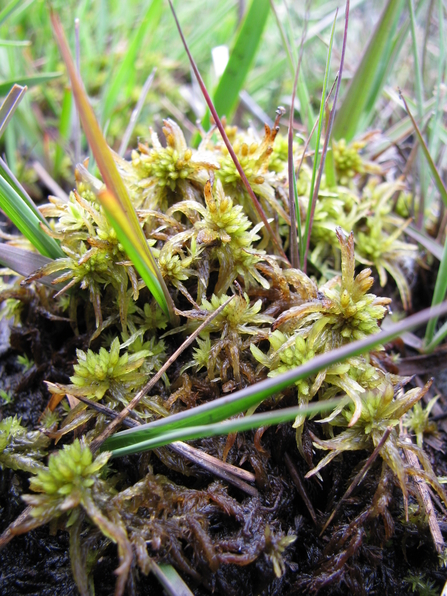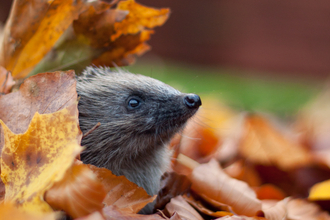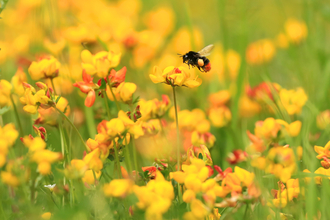The brightest greens on the reserve throughout winter are provided by the mosses, not just in the upper bog, where the SSSI citation mentions 12 species of sphagnum moss, but the many other species, in long and cropped grass, on bare soil and stones, and on tree trunks and stumps - anywhere with poor drainage and low soil fertility. Those on vertical surfaces avoid being swamped by fallen leaves. Accurate identification requires a strong magnifying lens and a good guide to the 800 UK species.
Feathery or velvety, a clump of moss contains many individual little plants, which have stems and tiny leaves. However, mosses do not have true roots, instead using small hair-like structures called rhizoids which anchor the plant and uptake nutrients. With no lignin to create a rigid structure they can’t grow very tall and are typically between 0.2-10cm. Mosses are non-vascular plants, meaning they contain no veins to carry water around the plant. They photosynthesise and obtain water either by slow diffusion up the plant from the soil, or absorption of rain and mist by the surface of the whole plant, like blotting paper. So damp habitats are essential, from Antarctica to deserts. One of the earliest plants to develop on earth, they survive in many more habitats than vascular plants. There are no flowers for reproduction; the tiny capsules on slender stems, visible right now on some species, contain the spores created by the union of male sperm scattered by raindrops and a female egg.

Mosses are engineers. Not being reliant on nutrient take-up from the soil, they are early colonisers of bare ground. As they absorb and hold water, they form damp micro habitats, providing shelter to invertebrates both visible and microscopic, and moisture for nearby plants and pioneering plant colonies slowly develop. As well as forming peat that sequesters so much carbon, mosses in bogs and on slopes hold water that otherwise might rush downhill resulting in erosion and flooding.
In mid-January as water actually trickled through the top bog and lay glinting on all flat ground, Ian Rickards commented “We've had some impressive flooding, especially on the extension fields. Areas like this are so important for storing flood water and preventing problems to housing and farmland.” The reserve’s capacity to hold water was increased in January by a big yellow digger rooting through bracken, brambles and birch trees and enriched topsoil, piling the debris into banks and leaving new pools and areas of exposed bare soil open to germination by new plants. This restoration of bog habitat will encourage the more fragile plant and insect species adapted to this habitat to flourish. The digger is a speeded-up version of the action of the wild animals – Ian was thinking boar, I was thinking bison – that would have roamed here, toppling trees, trampling, rooting and scraping the ground. We look forward to seeing what appears this spring and summer. Unfortunately, the Kent Wildlife Trust bison will be restricted to our Blean Woodland reserve near Canterbury.
Paths on the reserve get very muddy through the winter. It’s best to wear the right footgear and walk straight through, enjoying the mud and the puddles, rather than round. This avoids widening the paths unnecessarily and trampling the fragile plants, including the seedling heathers and tiny ephemerals that grow on the close-cropped species-rich edge habitats.


